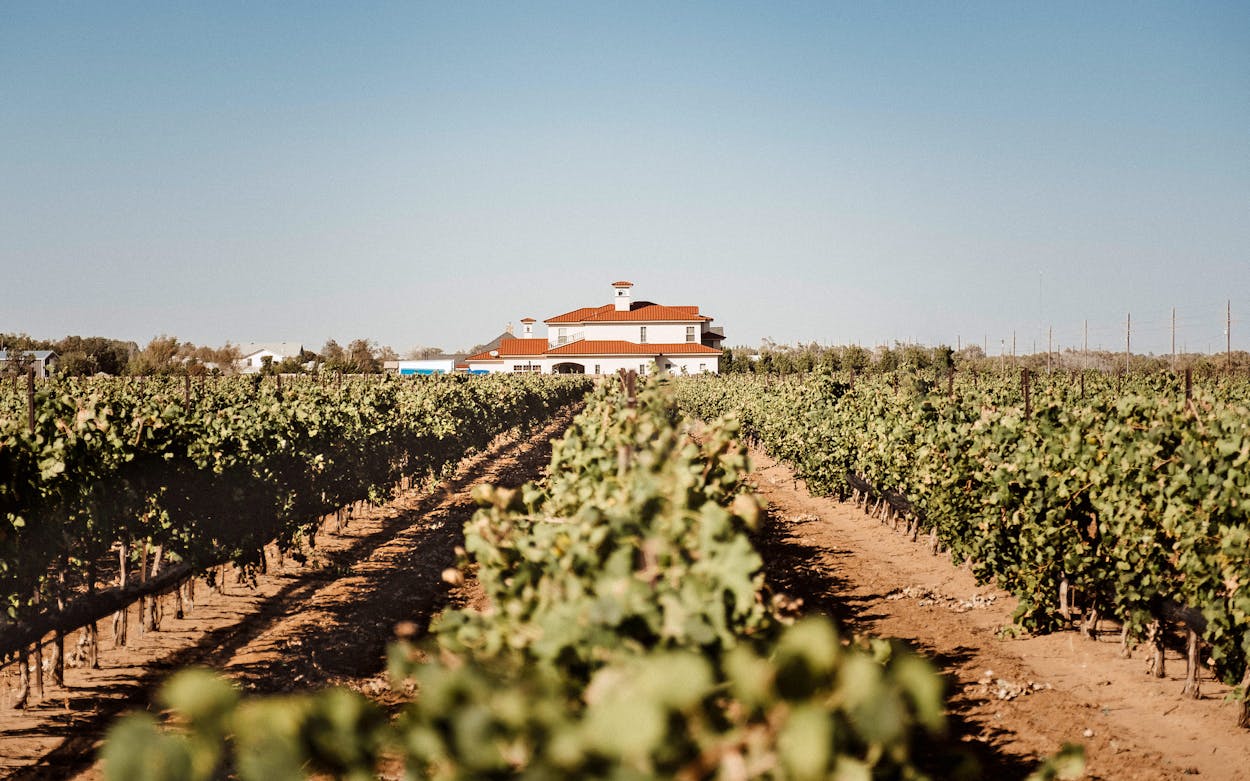Something is killing Andy Timmons’s grapevines. On a cool Thursday morning in August, the 53-year-old farmer was walking me through one of his vineyards just west of Lubbock. “You see how these leaves are shriveled up?” he said, grabbing one of the chest-high branches and pulling it away from the trellis. Some of the leaves in the cluster were the size of my hand, while others were stunted and had curled back on themselves, as if in physical pain. “That’s called cupping.”
Timmons, whose long, white beard and confident pronouncements give him the air of an Old Testament prophet, owns around two hundred acres of vineyards spread across the Texas High Plains. He comes from a long line of farmers. His ancestors grew row crops in Georgia until the Civil War forced them to relocate here. After earning a degree in agronomy from Texas Tech, Timmons went into the family business, growing cotton and peanuts.
His farms prospered, but Timmons worried about water. The Ogallala Aquifer, which irrigates the High Plains, was being pumped faster than it could be replenished. Droughts seemed to be more frequent and more severe. “I didn’t feel like I had a legacy I could pass on to my children,” he told me. “To make money with less water, you need a high-value crop.” And few crops offer higher value per acre than wine grapes.
Timmons starting planting grapes for economic reasons. But, like many other vineyard owners, he fell in love with the craft and challenge of winemaking. He sought out mentors such as Bobby Cox, who owns Pheasant Ridge Winery and has been growing grapes in the High Plains since the 1970s. Building on Cox’s advice, Timmons soon made a name for himself through innovations including the use of wind machines, to keep frost from setting on the leaves, and hail netting. He now sells grapes to some of the state’s most decorated wineries, including McPherson, Grape Creek, Pedernales, and William Chris. In 2014, Timmons and his nephew founded their own winery, Lost Draw Cellars, which sells its 100 percent Texas-grown wine from a tasting room in Fredericksburg.

For most Texans, as well as out-of-state visitors, Fredericksburg is synonymous with the state’s wine. The Hill Country boasts more than one hundred wineries and vineyards and has become a major tourist destination. But the $13 billion Texas wine industry sources the vast majority of its grapes—about 70 percent—from the High Plains, more than three hundred miles to the northwest. There, the roughly 3,500-foot elevation (about twice as high as that of Fredericksburg) and semiarid climate ensure that the grapes cool somewhat at night, even in the heat of summer. Also, land in the Hill Country is expensive; many of the vineyards attached to local wineries are there in part to create an Instagram-friendly aesthetic.
Timmons played a major role in turning the High Plains into the grape-growing capital of Texas. Through years of experience, he’s learned how to protect his vineyards from hail, freezes, and droughts. But until 2017, he had never seen anything like the cupped leaves. At first, he wasn’t sure what was causing the damage. His search for a culprit led him to a TikTok video made by a Missouri soybean farmer. “The soybean leaves were cupping, just like my grape leaves,” he told me. “And all the soybean fields were receiving drift from dicamba.”
Dicamba is a powerful herbicide that has been used by row-crop farmers since the 1960s to kill problematic weeds. From the beginning, though, dicamba proved unusually volatile. After being sprayed on crops, the liquid herbicide vaporizes for days—one weed scientist suggested as long as three weeks—potentially sending clouds of gas into neighboring fields. Because of dicamba’s potential for so-called off-site movement, the Environmental Protection Agency originally allowed farmers to apply it only in winter months ahead of the growing season. But in 2016 the EPA granted Bayer and BASF permission to market a new formulation that included a chemical additive designed to reduce volatility. Farmers across the country could now apply the herbicide in the middle of the growing season. Many cotton farmers in the High Plains immediately started switching over to dicamba, and the herbicide is now used on at least fifty percent of the region’s three million acres of cotton.
Vineyards such as Timmons’s, islands in an ocean of cotton, got buffeted from all sides. Vines died. According to legal filings, grape yields fell by as much as 90 percent. Growers say that even the healthiest vines showed cupping, shriveling, and other signs of damage. “Every year it got progressively worse,” Timmons said. Scientists have found that within hours of dicamba exposure, plant leaves can start to shrivel. The herbicide causes abnormal growth, disrupting plant functions. Studies have found stunted leaves, cupping, and reduced fruit yield in dicamba-impacted grape vines. In cases of direct drift, when grapes do appear, they’re often BB-size and unsuitable for winemaking.
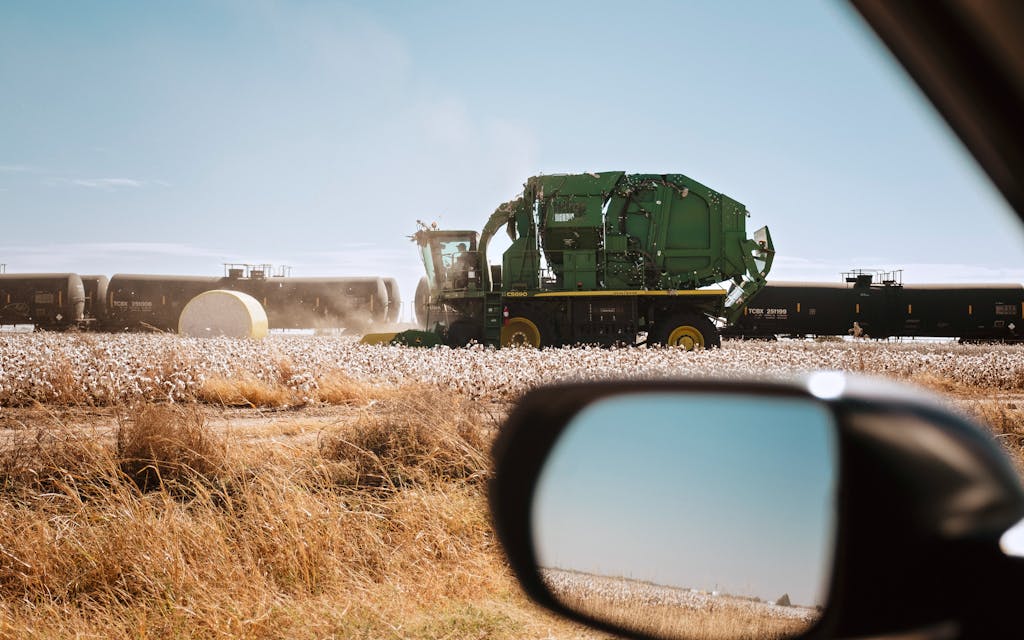
“I don’t even want to drive the tractor through my grapes anymore,” Timmons told me. “It makes me physically ill to see my plants deformed like they are.” High Plains vineyard owners told me that if nothing changes, they will be out of business within a matter of years.
In June, Timmons and a group of 56 other vineyard and winery owners in the High Plains filed suit against German conglomerates BASF and Bayer—the company that purchased Monsanto in 2018—in state district court, claiming $114 million in economic damage and $228 million in punitive damage from dicamba. Every vineyard in the High Plains has suffered damage, according to the lawsuit. Farmers have had to tear out and burn entire sections of vineyards. Messina Hof, one of the oldest wineries in Texas, recently sold two of its High Plains vineyards because of what it claims is extensive dicamba damage. BASF and Bayer issued written statements to Texas Monthly rejecting the lawsuit’s claims. The companies cited EPA approval and said there are many possible explanations for the damage, including a 2019 freeze and off-label use of other herbicides. As long as cotton growers follow instructions for dicamba, there should not be significant off-site movement, they said.
But the vineyard owners see dicamba as a mortal threat. “I would venture to say that [herbicides] are the number one challenge to our industry,” said Paul Bonarrigo, Messina Hof’s CEO and chief winemaker. (Although Messina Hof isn’t a plaintiff in the lawsuit, Bonarrigo said he supports its claims.) The Texas grape growers are following in the footsteps of American soybean farmers, who reached a $400 million settlement with Bayer in 2020.
In the High Plains, the lawsuit has pitted grape growers against cotton growers and neighbor against neighbor. Although they aren’t named in the lawsuit, many cotton growers continue to rely on dicamba and fear that a favorable verdict could lead BASF and Bayer to pull it from the market. There have been reports of verbal altercations and threats. “We’ve become pariahs for trying to bring people’s attention to it,” Timmons told me. One cotton grower told Timmons that because cotton was grown in the High Plains before grapes, cotton should enjoy priority. “I said, ‘Well, if you think that way then everything needs to go back to grass and be given back to the Native Americans, because they were here first.’ ”
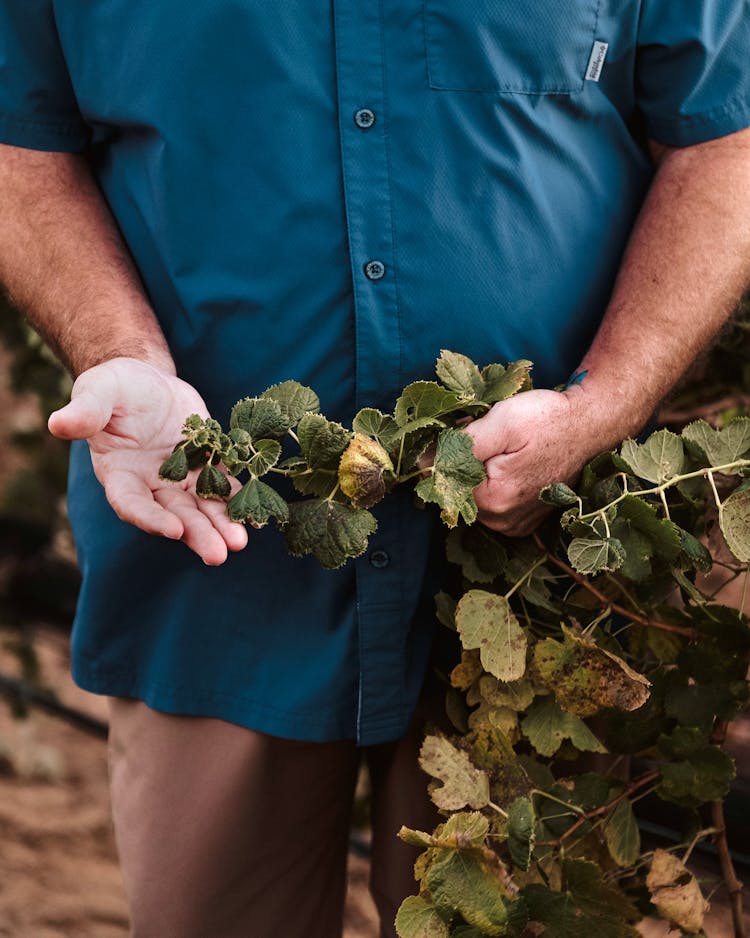
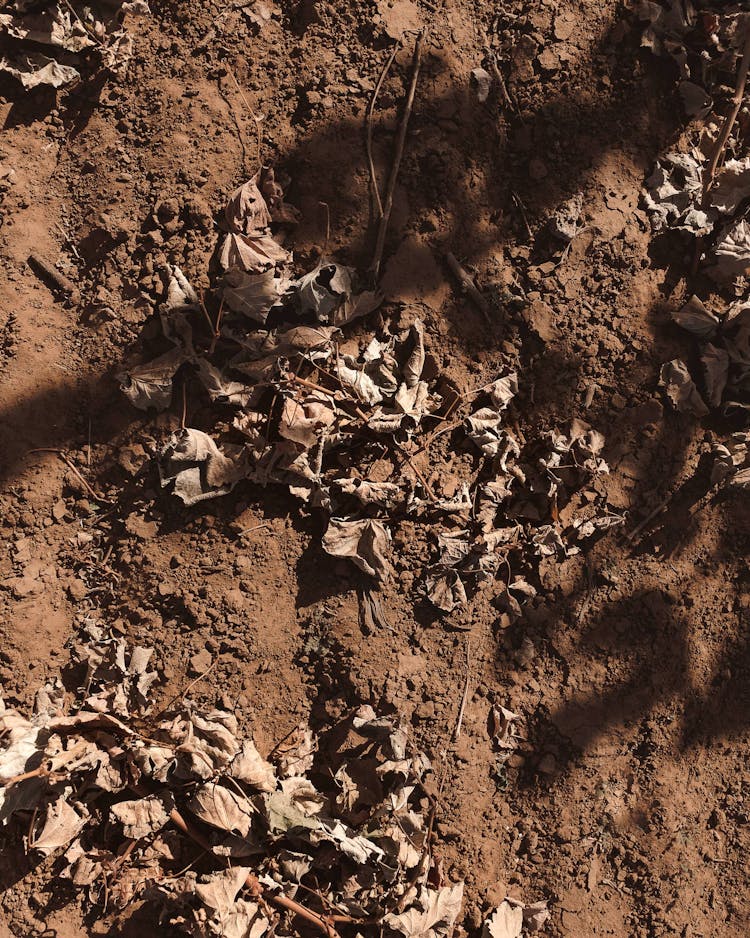
Wine has been produced in Texas since at least 1660, when Spanish missionaries used Mexican cuttings to plant a series of vineyards near present-day El Paso. The industry started taking off in the late 1970s with the opening of wineries like Messina Hof and Llano Estacado. But Texas wine was little-known outside the state until around fifteen years ago, when a group of enterprising grape growers and winery owners launched a revolution aimed at putting the industry on a footing with California and Washington state .
One of the key revolutionaries was Chris Brundrett, a San Angelo native who developed a passion for wine as an undergraduate horticulture major at Texas A&M. He wanted to be a vintner, but several years working for a Hill Country winery in the early aughts left him disillusioned. “Nobody gave a f— about the grapes,” he recalled. “It was all these doctors and lawyers and engineers opening up wineries. A heart surgeon would take a weekend course and then plant a vineyard.”
Brundrett was applying for jobs in the California wine industry when he met Bill Blackmon, a veteran grape grower and winemaker from the High Plains who was working for Granite Hill Vineyards, fifteen miles northeast of Fredericksburg. “When I visited Granite Hill, the vineyard was just beautiful—everything was in order,” Brundrett told me. “We tasted some wines that he had, and I thought, ‘This is a guy I need to connect with.’ ”
A few months later, the two happened to run into each other at a local restaurant. “I was telling him how frustrated I was at the industry, that nobody was really making terroir-driven wines, and he was like, ‘Man, that is exactly what I’ve been talking about for so many years.’ ” Terroir encompasses the soil, climate, and topography in which grapes are grown. The best wines come from grapes grown in the terroir to which they’re best suited. In Texas, that generally means that heat-tolerant grapes such as, say, syrah perform better than more-finicky ones such as pinot noir.
In 2008, Brundrett and Blackmon cofounded William Chris Vineyards, which has grown into one of the state’s largest and most award-winning wineries. Brundrett says the company, which crushed more than two million pounds of Texas-grown fruit in the 2021 vintage, has year-over-year growth of around 15 percent. By sourcing all of its grapes from Texas, it has built up a loyal base of clients who often order wines according to the vineyards from which they originated. (Timmons’s vineyards are particularly sought-after.)
Wine connoisseurs took notice. Texas wines began winning major awards at competitions from California to France. In 2019, Wine Spectator proclaimed that “the future is bright for Texas wine.” The story quotes French-born winemaker Benjamin Calais, who operates Calais Winery in the Hill Country, predicting that “this is Napa in the late sixties”—right before the region took off.
At William Chris’s lavish, members-only tasting room off U.S. 290 near Fredericksburg, I met Dirk Jordan, a 67-year-old attorney and law professor who was sampling a glass of the vineyard’s Artist blend. For years, Jordan and his wife would make an annual pilgrimage from Texas to Sonoma, California, to visit wineries. They wanted to like their state’s wines, but found most of the bottles they tried undrinkable. “They tasted like dirt,” Jordan told me. That changed around 2011, when they discovered William Chris. “My preference is for big, bold reds, and that’s what they have here,” he said. The Jordans later sold their house in Austin and moved to the town of Albert, which just happens to be a ten-minute drive from the William Chris tasting room.
Dicamba now threatens the industry’s progress. Farmers say that grape yields in the High Plains have been falling steadily since 2017—the year BASF’s and Bayer’s new dicamba-based herbicides became widely available—making it difficult for wineries such as William Chris to find enough fruit for their wines. One of William Chris’s most popular bottles, Hunter, is a merlot/malbec/cabernet sauvignon blend sourced from four vineyards in the High Plains. The wine, which retails for $50 a bottle, is often purchased years in advance by members of the vineyard’s wine club, who number in the thousands. William Chris sold 1,500 cases of the 2021 vintage before a single grape was harvested. “If we could make three thousand cases, we could sell three thousand cases,” Brundrett said. “But we’re missing malbec big-time right now, one hundred percent due to dicamba. When we can’t get the fruit, what can we do?”
Brundrett is one of the plaintiffs in the BASF/Bayer lawsuit, but he blames the companies that created and marketed the herbicide rather than the cotton farmers who use it. “They have to use [the] dicamba [crop system], because if they don’t their cotton will die,” he said. “Those guys are trapped.”
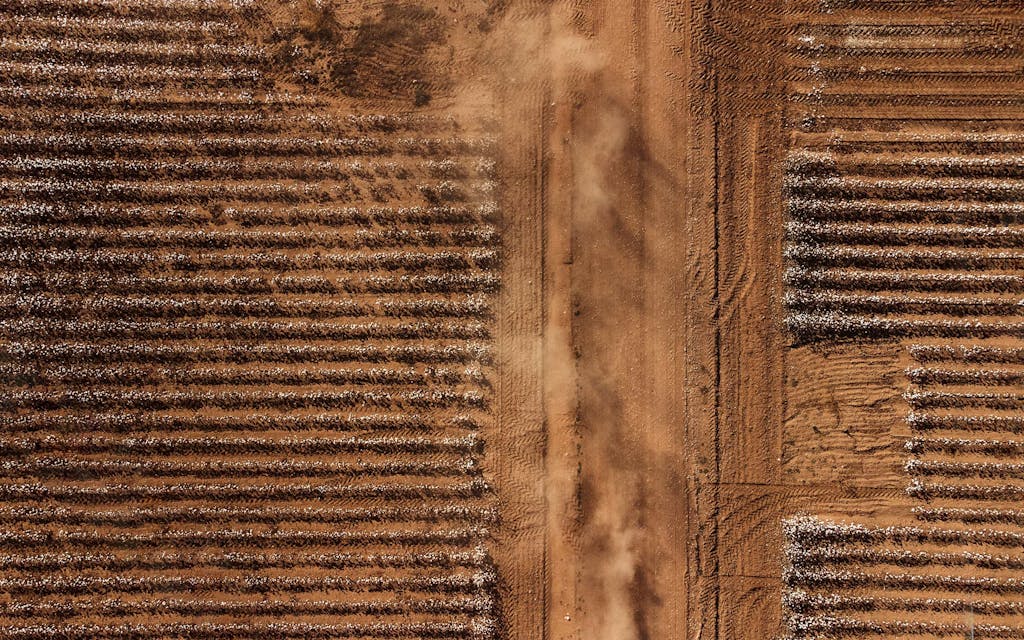
To understand what Brundrett means, you have to know a little about Monsanto’s dominant role in American agriculture. In the 1990s, the century-old, St. Louis–area chemical company patented a series of genetically modified crop seeds that could survive repeated applications of the company’s proprietary herbicide, Roundup. Monsanto marketed the seeds and the herbicide to farmers as the “Roundup Ready” crop system, which proved enormously popular. By 2008, 92 percent of soybeans and 68 percent of cotton plantings in the United States were grown from Monsanto’s GMO seeds. Over time, though, so-called superweeds, like the Palmer amaranth, also known as Palmer pigweed, developed resistance to Roundup, sending Monsanto back to the drawing board.
What it came up with, in partnership with BASF, was a new crop system, Roundup Ready Xtend, based on cotton and soybean seeds that had been genetically modified for resistance to both Roundup and dicamba. Farmers desperate for a solution to their superweed problem eagerly bought up the seeds, planting 27 million acres of dicamba-resistant crops for the 2017 growing season. (The grape growers’ lawsuit estimates that around two million acres of dicamba-resistant cotton is now planted in the Texas High Plains every year.) The previous fall, the EPA had granted a two-year conditional registration for three dicamba-based herbicides manufactured by BASF, Bayer (which purchased Monsanto in 2018), and DuPont. The EPA-approved label included several restrictions intended to limit drift. Among other stipulations, the herbicide couldn’t be applied when winds were blowing faster than fifteen miles per hour, or if rain was expected in the next 24 hours. There also had to be a buffer of at least 110 feet between the last treated crop and the nearest downwind edge of the field.
Despite these restrictions, reports of dicamba-damaged crops—including grapes, soybeans, and peaches—soon began pouring in from around the country. According to a report by University of Missouri weed scientist Kevin Bradley, 2,708 formal complaints were investigated by state departments of agriculture during the 2017 growing season. Some states imposed additional restrictions beyond the EPA requirements. After 2018, when Arkansas effectively banned dicamba during the growing season, reports of crop damage there dropped from 986 to 200.
The grape growers’ lawsuit labels Roundup Ready Xtend a “protection racket.” “Defendants knew Monsanto’s dicamba-based seed system as designed and sold to its customers would inevitably lead to other farmers’ crops being damaged or destroyed by dicamba that drifted or volatilized when it was used as part of the seed system,” the lawsuit reads. But at least cotton farmers have the option of buying dicamba-resistant seeds. There’s no such thing as dicamba-resistant grape vines, which means that High Plains vineyards are at the mercy of their cotton-growing neighbors. (In addition to being a frequent target of lawsuits, Bayer/Monsanto is an enthusiastic litigant itself; the recent film Percy vs. Goliath is based on the true story of a Canadian farmer whom the company sued for refusing to pay a “technology use” fee when Roundup Ready GMO plants were found in his fields.)
In Texas, grape growers say their complaints fell on deaf ears at the Texas Department of Agriculture (TDA). Here, cotton is still king. The state produces around six million bales a year, representing 40 percent of total U.S. production and making cotton the state’s largest cash crop, with an estimated economic impact as high as $24 billion. That gives cotton growers enormous influence with the TDA. One High Plains grape grower, who asked to remain anonymous, told me that he filed a formal complaint about dicamba damage with the TDA, in hopes that the agency would fine the cotton growers. Instead, the grower came under investigation himself. He was forced to open up his books to state regulators to prove he hadn’t caused the damage through his own negligence. “I guarantee you, if this was going on in California it would have been stopped four years ago,” Timmons told me. “But Sid Miller, the Texas agriculture commissioner, is all in on cotton.” (Miller and the TDA declined an interview request for this story, citing a policy of not commenting on ongoing litigation.)
Kody Bessent, CEO of Plains Cotton Growers, an industry lobbying group, rejected the idea that dicamba is responsible for damage to High Plains vineyards. “I have not confirmed or seen any types of fact-based information [about that], other than hearsay or a news article,” he told me.
A minority of cotton growers in the High Plains use traditional techniques to kill weeds, including crop rotation, regular tilling of the soil, and physically hoeing the weeds as they appear. But these organic methods are more costly and labor-intensive, and a majority of growers have come to instead rely on chemical herbicides like dicamba. Some High Plains cotton growers initially resisted switching over to BASF/Bayer’s dicamba-resistant seeds, only to find their cotton crops damaged by herbicides sprayed by their neighbors. The only way to protect themselves was to buy the GMO seeds. Internal company documents released during the courses of previous lawsuits reveal that BASF and Monsanto anticipated this scenario. One Monsanto employee told a scientist that “everyone will just have to plant Xtend crops, and then [dicamba damage] won’t be an issue.” In a BASF strategy update, the company reportedly cited “defensive planting” as a “potential market opportunity.” And a Bayer employee told a colleague in an email that “I think we can significantly grow business . . . if we reach out to all the driftee people.”
Cliff Bingham, who farms about two hundred acres of vineyards in the High Plains and is a plaintiff in the lawsuit, told me that a nearby cotton farmer resisted adopting the dicamba-ready system because he knew the herbicide would harm Bingham’s grapevines. “I told him, ‘I really appreciate what you’re doing, but it’s the other three million acres that are the problem.’ It’s not the neighbors next to me; it’s the [land] within ten miles of me.”
Nearly everyone except BASF and Bayer agrees that dicamba is spreading off-site during and after application. The problem goes beyond direct drift, which is relatively manageable and should only affect the edges of neighboring farms. I witnessed what appeared to be dicamba damage in every part of the five High Plains vineyards I toured, including some that are miles from the nearest cotton farm. The real problem, grape growers say, is volatilization‚ the phenomenon that BASF/Bayer’s new formulation was designed to reduce. The gas, they say, rises into the atmosphere, where it forms an invisible cloud stretching for miles across the High Plains.
During my visit to his vineyard in Meadow, Bingham showed me row after row of stunted vines, many of which had yet to produce a single grape. Even the healthier-looking vines were, upon closer inspection, riddled with cupped leaves. Bingham has had to burn large sections of his vineyard. All that remains are long rows of charred plants. I saw similar burn piles in several other vineyards I visited. “I told [folks] that I would give them one hundred dollars if they could find a single plant without dicamba damage,” Bingham told me. “Nobody claimed the reward.”
According to the grape growers, dicamba isn’t just killing vineyards. I saw the same cupping on tomato plants in the home garden of grape growers (and fellow plaintiffs) Dwayne and Brenda Canada, and on the shade trees in their front yard. “I’ve had tomatoes in my backyard for forty-seven years until dicamba came along,” Brenda told me. The couple knows exactly what dicamba damage looks like: Dwayne briefly used the herbicide on his own cotton crops until he realized what it was doing to a nearby vineyard he owned. “When I saw what was happening to the grapes, we quit using it, and haven’t used it since.”
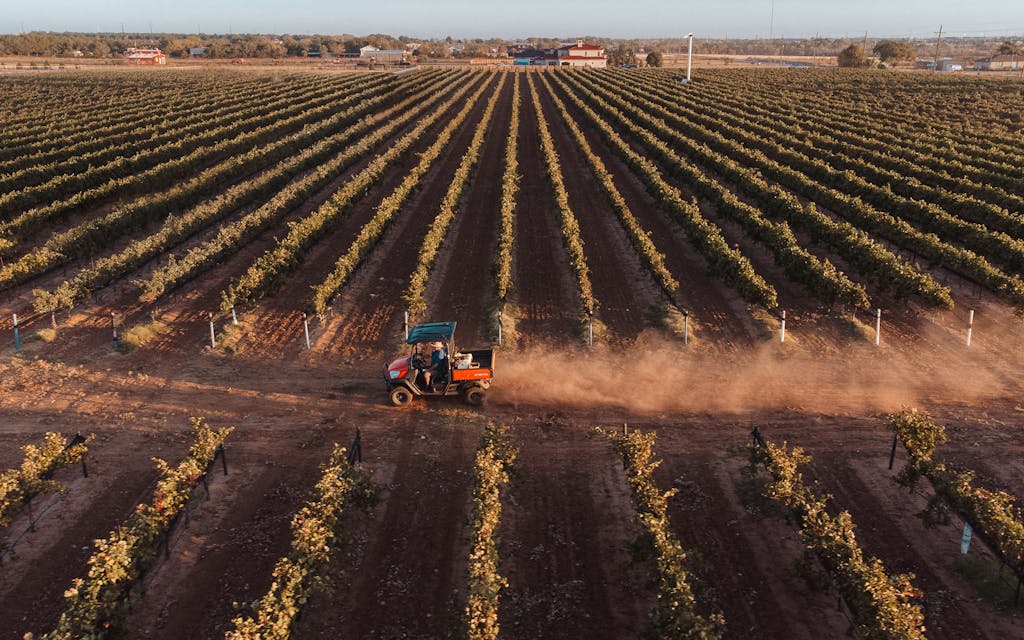
In 2020, a Missouri jury found BASF and Bayer liable for $15 million in damage to the state’s largest peach orchard, tacking on an additional $250 million in punitive damages. (BASF and Bayer are appealing.) Later the same year, Bayer reached a $300 million settlement with soybean farmers whose crops were damaged by dicamba exposure. Any soybean farmer who can document damage from dicamba between 2015 and 2020 is eligible for a payout—a fact that both companies brought up in their comments to Texas Monthly. “It’s also interesting to note that these growers did not raise their claims until after Bayer announced its . . . settlement with soy growers,” read BASF’s statement.
A similar settlement with Texas vineyard owners is possible, although the grape growers told me they mainly want dicamba taken off the market—either voluntarily or through the EPA revoking its registration. A group of public interest groups sued the EPA in 2017, alleging that the agency violated the law in approving the new dicamba formulations. A three-judge panel of the Ninth Circuit Court of Appeals agreed, ruling last year that the agency “substantially understated risks [of dicamba use] it acknowledged and it entirely failed to acknowledge other risks.” The decision forced the EPA to pull dicamba’s registration, only to reinstate it a few months later with a stricter set of label instructions. The public interest groups are once again suing the EPA. “We knew from the start that dicamba was going to be problematic based on everything we had learned from scientists,” said Bill Freese, the scientific director for the nonprofit Center for Food Safety, one of the plaintiffs in the EPA lawsuit. “I actually wrote comments to the EPA on this back in 2010. And they just ignored all of those warnings.”
One of the risks the EPA failed to consider in approving the new dicamba formulation, the Ninth Circuit panel ruled, was the threat to social harmony in rural areas of the country. “The record contains extensive evidence that . . . application of dicamba herbicides has torn apart the social fabric of many farming communities,” the judge wrote, noting, among other troubling incidents, the murder of an Arkansas farmer in 2016 during an argument over dicamba damage. One respondent to a survey conducted by the Illinois Fertilizer and Chemical Association noted that “in 43 years of business I have never seen a more divisive product among neighbors both farm and non-farm.”
Timmons told me that one of his fellow grape growers received a death threat from a cotton farmer over his dicamba complaints. Not wishing to escalate the conflict, the grower didn’t report the threat to law enforcement, according to Timmons, who declined to share the person’s name with Texas Monthly.
Cotton growers continue to rely on BASF and Bayer products. It’s unclear whether that loyalty runs both ways. The companies have argued in court that dicamba drift or volatilization could be caused by improper application of the herbicide. In its statement to Texas Monthly, BASF wrote that “we continue to provide training to applicators and emphasize the importance of following the label requirements for Engenia [BASF’s dicamba brand] herbicide to achieve on-target applications.”
But both cotton growers and public interest groups have noted the near-impossibility of adhering to label instructions. The EPA has tightened the rules for dicamba application almost every year since it was approved in 2016. The current label for BASF’s Engenia herbicide is 21 pages long and includes an exhaustive list of rules and instructions. To prevent drift, application is only permitted from one hour after sunrise to two hours before sunset, and only when the wind is between three and ten miles per hour. These restrictions mean the herbicide can only be applied for a few dozen hours over the course of a growing season, the Ninth Circuit noted. (Although, because of lax enforcement, it’s likely that many growers bend the rules.)
There is some evidence that under the Biden administration, the EPA is taking the threat of dicamba more seriously. Last year, a senior EPA official acknowledged that during the Trump presidency, “political interference sometimes compromised the integrity of our science.” The first example of interference listed was the EPA’s decision to reapprove dicamba in 2018. In September, the agency sent letters to dicamba producers reminding the companies of their obligation to turn over all research studies on the safety of the herbicide. “EPA is aware of lawsuits against certain parties related to the use of these products,” the letter read. “Any information . . . that has been developed or provided in connection with a lawsuit must be reported.”
In their statements to Texas Monthly, BASF and Bayer speculated that the damage incurred by High Plains vineyards could be attributed to severe winter weather. While the vineyard owners I spoke to acknowledged losing some vines to a 2019 freeze, they believe the plants were already weakened by years of dicamba exposure. “We’ve had freezes from day one,” Bingham told me. “We’ve had hailstorms from day one. We’ve had droughts, we’ve had monsoon seasons with excessive rain. So then what’s causing the plants to die now?”
Like the other vineyard owners I spoke with, Bingham is concerned that the reputation of High Plains grapes, and the wines made from them, will be tainted by their association with dicamba. The Texas winemakers I interviewed said their tests have not detected the herbicide’s presence in any of their bottles. But in a perception-driven industry, consumers may recoil from the mere prospect of dicamba-contaminated vino. If wine grapes can no longer be grown in the High Plains, production will have to shift to the Hill Country, where land is significantly more expensive, or far West Texas, which will raise transportation costs. Either way, prices will increase for both producers and consumers. And the world will lose the distinctive terroir of the High Plains grapes that helped put the Texas wine industry on the map.
The grape growers said they see no choice but to speak up about what’s happening. “Vines are just the canary in the coal mine,” Timmons told me recently by phone, his voice rising in indignation. In recent years he has become the Jeremiah of the High Plains, proclaiming the coming environmental apocalypse to anyone who will listen. “Every person on the High Plains is breathing that stuff in with every breath. The vines are showing you what’s in the air.”
